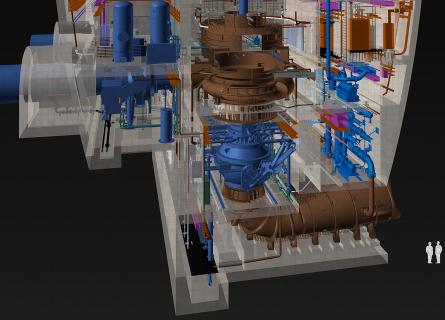
Storing wind and solar energy in water
We need to replace fossil fuels in the future energy mix. Wind and solar power will be crucial components of the renewable systems, but they cannot stand alone.
When the wind doesn’t blow and the sun doesn’t shine, we will need a backup. In hydropower, we have a proven, efficient technology that can store wind and solar energy for those times of need. No other technology can provide energy storage at the scale required to deliver on our climate goals. By using a water battery, we can strengthen our renewable energy systems and enable more development of wind and solar.
We can, with hydropower.
Water batteries
Pumped hydro is a form of hydropower that utilises two reservoirs at different levels of elevation. It operates like a green, rechargeable water battery that absorbs energy when supply exceeds demand. When demand is low, water can be pumped from the lower to the upper reservoir, where it is stored. The water can then be released through a turbine, supplying electricity to the grid at times of need. Traditional ‘storage hydropower’, which uses a dam on a river to store water in a reservoir, can also be used flexibly to provide base load power, and then ramped up or down at short notice in response to the demands of the system. With huge amounts of wind and solar power coming onto electricity grids each year, there is an urgent and growing need for new hydropower development to provide green storage, backup and grid services.
Hybrid renewable technologies
Thanks to advances in technology, hydropower does not always need to be developed in isolation from other renewables. For example, the generation capacity of hydropower sites can be increased by installing solar PV on the surface of a reservoir. Combining solar and hydropower can smooth the variability of solar output, thus supporting renewable energy deployment in grids that lack the flexibility to incorporate large injections of intermittent sources.
This article originally appeared on hydropower.org and has been republished here with permission.


